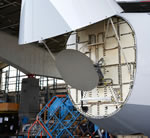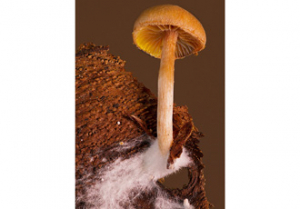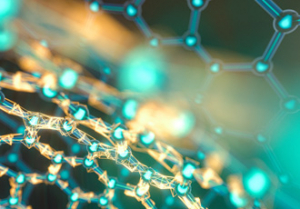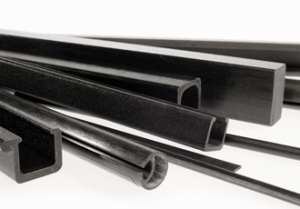Improved Dielectic Properties Of AGY'S L-Glass Fibres Attracting Attention Of Randome Manufacturers
20th July 2012
Source:
AGY

L-Glass fibres are a low-loss glass fibre yarn from AGY that was originally developed for electronics applications. It is now being evaluated for use in the manufacture of radomes, which have some of the same material property requirements. L-Glass fibres were developed to address the demands for higher speed/frequency signals in the Cloud computing and telecom infrastructure.
As these systems move to higher frequency ranges, substrates with low loss properties are needed to ensure the speed and integrity of the signals. L-Glass fibers help achieve these increased signal speeds and better signal integrity than traditional E-Glass/epoxy substrate materials.
Radomes must have inherent electronics capabilities. “Most radomes are traditionally manufactured using either E-Glass or quartz fibers,” explained AGY President Drew Walker. “However, there is a large gap in terms of performance and cost between the two. While quartz has the best available electrical properties, it is very high cost (>$100/lb). E-Glass, on the other hand, is low cost ($1-$2/lb) but does not offer great electrical properties. We developed L-Glass fibers to be a cost-effect alternative, one that offers better electrical properties than E-Glass but at a significantly lower cost than quartz.”
Radomes are structural, weatherproof enclosures that protect a microwave or radar antenna from the effects of environmental exposure such as wind, rain, ice, sand, and ultraviolet rays and/or hide antenna electronic devices from public view. Radomes also protect workers who are close by from being hit accidentally by rapidly revolving antennas. In observation radar systems, a dome may be fixed to intentionally make the radar scanning direction unclear. Generally, aircraft that have an external radar add-on use a radar dome to rationalize surfaces that are exposed to air resistance.
Radomes are built with materials that simply reduce the force of the electromagnetic signal transmitted or received by the antenna. Simply put, the radome is transparent to radar or radio waves. “Signal transparency is a key material property to ensure that energy is transmitted/received with minimal loss,” explained Walker. Radomes require materials that have high specific mechanical properties coupled with good dielectric characteristics. “L-Glass fibers have a significantly lower dielectric constant than E-Glass for improved data rates and a significantly lower dissipation factor than E-Glass for improved signal integrity,” said Walker. “It is a higher-performing, lower cost-effective alternative.”
Several radome manufacturers have expressed interest in evaluating L-Glass fibers for their applications. “Initial evaluations are underway using lightweight electronic fabrics,” said Walker. “Mechanical testing of laminate produced from these fabrics indicates the performance is comparable to E-Glass.”
Radomes must have inherent electronics capabilities. “Most radomes are traditionally manufactured using either E-Glass or quartz fibers,” explained AGY President Drew Walker. “However, there is a large gap in terms of performance and cost between the two. While quartz has the best available electrical properties, it is very high cost (>$100/lb). E-Glass, on the other hand, is low cost ($1-$2/lb) but does not offer great electrical properties. We developed L-Glass fibers to be a cost-effect alternative, one that offers better electrical properties than E-Glass but at a significantly lower cost than quartz.”
Radomes are structural, weatherproof enclosures that protect a microwave or radar antenna from the effects of environmental exposure such as wind, rain, ice, sand, and ultraviolet rays and/or hide antenna electronic devices from public view. Radomes also protect workers who are close by from being hit accidentally by rapidly revolving antennas. In observation radar systems, a dome may be fixed to intentionally make the radar scanning direction unclear. Generally, aircraft that have an external radar add-on use a radar dome to rationalize surfaces that are exposed to air resistance.
Radomes are built with materials that simply reduce the force of the electromagnetic signal transmitted or received by the antenna. Simply put, the radome is transparent to radar or radio waves. “Signal transparency is a key material property to ensure that energy is transmitted/received with minimal loss,” explained Walker. Radomes require materials that have high specific mechanical properties coupled with good dielectric characteristics. “L-Glass fibers have a significantly lower dielectric constant than E-Glass for improved data rates and a significantly lower dissipation factor than E-Glass for improved signal integrity,” said Walker. “It is a higher-performing, lower cost-effective alternative.”
Several radome manufacturers have expressed interest in evaluating L-Glass fibers for their applications. “Initial evaluations are underway using lightweight electronic fabrics,” said Walker. “Mechanical testing of laminate produced from these fabrics indicates the performance is comparable to E-Glass.”
Similar articles
More from AGY
- AGY Announces Capacity Increase For L-Glass Low Loss Glass Fiber 12th March 2015
- AGY Introduces Two New Ultra-Fine Yarns For PCB Subtrates 19th March 2013
- AGY introduces new sizing systems for a wide range of Thermoplastic resins 24th October 2012
- Improved Dielectic Properties Of AGY'S L-Glass Fibres Attracting Attention Of Randome Manufacturers 20th July 2012












Write a comment
No comments